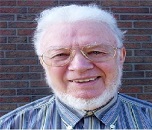International Conference on Nanobiotechnology
Chicago, USA

Gerd Kaupp
University of Oldenburg, Germany
Title: Much higher resolution below the diffraction limit than the more recent stochastic techniques for unstained pristine materials
Biography
Biography: Gerd Kaupp
Abstract
Light-microscope resolvability is limited by the Abbe diffraction limit (about l/2, or 200 nm). The obvious choice to break that limit failed with aperture NSOM (near-field scanning optical microscopy) producing artifacts (7 types) with its hot probes. However, apertureless SNOM with sharply tapered uncoated dielectric tips (at high aspect-ratio) of shear-force atomic force microscopes succeeded, due to an unexpected physical effect: the strong reflection enhancement (2 to >50 fold, depending on material and dumping setting) of the light back to the illuminated quartz waveguide, occurring abruptly in shear-force distance. Different materials' properties provide chemical contrast on unstained real-world materials. Lateral optical resolution down to < 8.6 nm is achieved, which highly supercedes the possibilities of stochastic techniques such as STED, PALM, STORM, etc., achieving only slight submicroscopic optical resolution (100 nm region). Only the latter require chemical reaction with fluorescence dyes, which profoundly and thoroughly changes them (for example their hydrogen bonding, natural coiling, etc.) They obtain only the dyes' fluorescence and are exceedingly expensive. Nevertheless, the present hype on stochastic techniques appeared to forget about the more versatile, easy, and cheap direct apertureless SNOM capabilities for revealing much smaller details (e.g. sub-organelles) with the chemical contrast plus concomitant topography, and for urgent validity check of the stochastic conclusions. Only the well-preceding apertureless SNOM applies to all types of pristine flat or rough surfaces (dielectric, semiconductive, metallic, fluorescing, non-fluorescing, organic, biological) at optical resolution down to < 8.6 nm, and spectroscopic identification. All artifacts of metal-coated NSOM are avoided, and constant intensity measurements secure valid apertureless SNOM conditions. The enhanced reflected light has been diffracted for local Raman and fluorescence spectroscopy. Physical details and already available industrial applications are discussed. These cover nanoparticles, sub-organelle-features, blood-bags, diffusion coefficients, cancer detection/localization and dental-alloy nanopitting check. Nothing of that is available from the expensive stochastic techniques.

